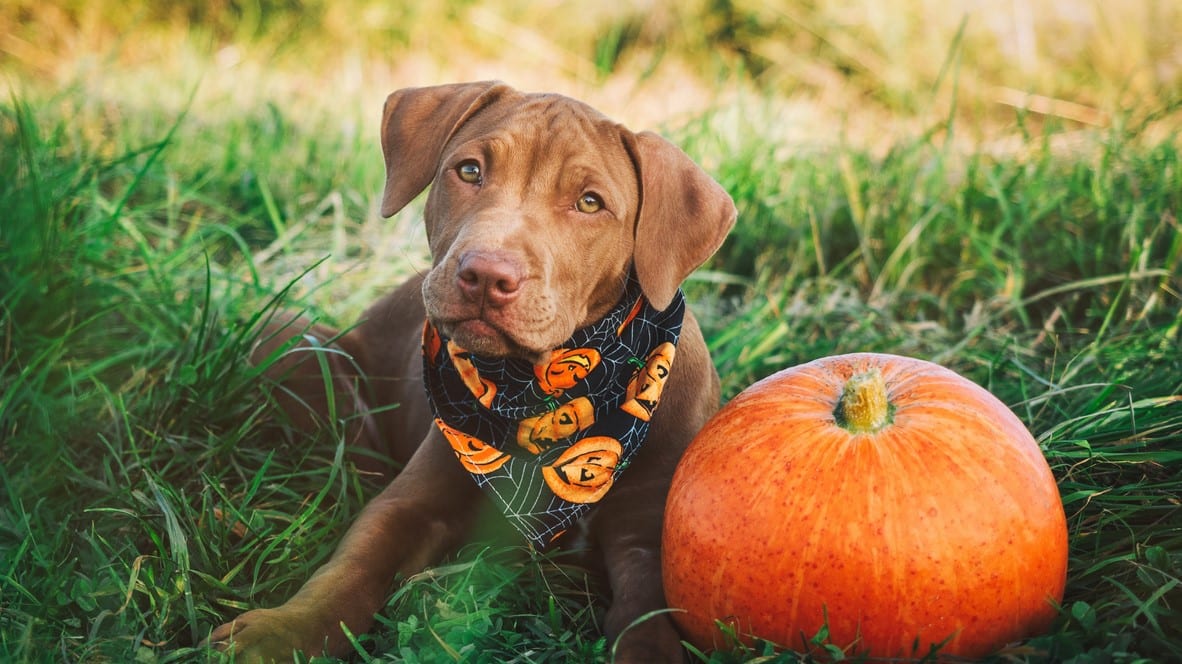Halloween Pet Safety

Tricks to Treating Your Pet to a Safe Halloween
Halloween is a fun time of year—for both children and adults alike! While many pets love to join in all the festivities, too, there are quite a few dangers to be aware of during this spooky season. Luckily, all these dangers can be happily avoided with some preventive measures and
Halloween Pet Safety Tips
Many of the pet dangers of Halloween are specific to this holiday, but as with all safety, they can be prevented with similar safety methods such as keeping pets away from toxic foods, harmful electric cords, and more.
Treats
Firstly, many Halloween candies are toxic to pets. Many of us know that chocolate is bad for cats and dogs, but there are also other toxins in treats as well. For one, the sugar substitute, xylitol, found in “sugar-free” candy is very toxic to pets. Make sure treats are stowed out of your pet’s reach, and when you do bring them down for trick-or-treaters, don’t give your pet any opportunity to snag a piece out from under your nose.
Trick-or Treaters
Depending on your pet’s personality, it can be best to give them a quiet room in the house to stay in during the night’s festivities. Constant visitors all dressed in ghoulish get-ups can be frightening for a pet. Unless your pet is well-behaved and friendly, keep them safe in a separate room where they aren’t bothered by trick-or-treaters.
Decorations
In addition to all the ghastly costumes, many spooky decorations can be both scary and harmful for our pets. Of course, anything with an electrical cord should be secured so that pets can’t chew at them. What’s more is jack-o-lanterns and candles pose a fire risk if a curious pet bumps it over. Other possible hazards include glow sticks and fake blood (potentially poisonous), fake cobwebs (easily entangled in or choked), and rubber eyeballs (choking hazard).
Pet Costumes
Sure, dressing up your pet in a Halloween costume can be a lot of fun, but sometimes pets are much happier without it. For a proper Halloween costume, your pet should be comfortable in it. It should not inhibit their movement, sight, hearing, or breathing. Take a few days for your pet to become used to the costume before Halloween, too.
Outdoor Dangers
Since Halloween is a nocturnal affair, there are different dangers outside than typically seen in the daylight. Nocturnal animals such as raccoons, opossums, and foxes are more likely to be out foraging, and a chance encounter with your pet could be dangerous. Keep your pet indoors to avoid these unexpected visitors!
Interested in some more Halloween pet safety tips? Give us a call to talk with our team!
